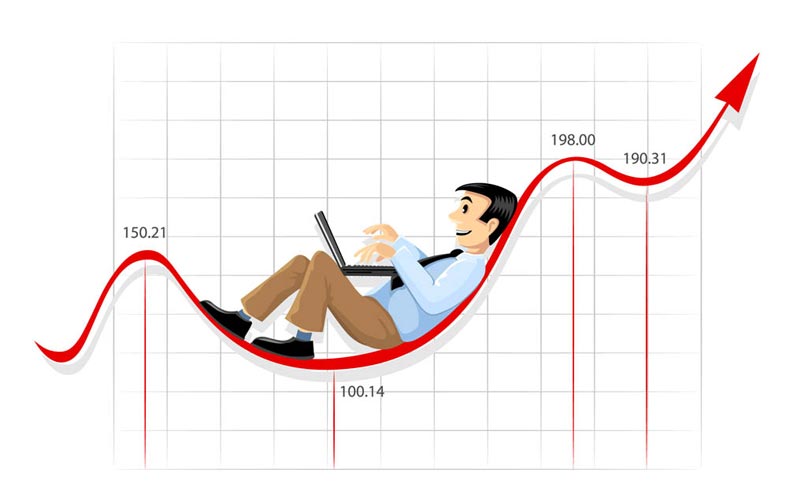Are you a trader? Have you ever hold on to your stocks for a long duration for making a higher profit? If yes, then congratulations! You have successfully participated in position trading. Okay, we know that you are a bit confused right now. So, let us explain.
You may know that there are several ways of trading in this field. Some traders like to sell their trades as soon as they buy them in high-frequency trading. Again, some UK traders don’t execute their trades as frequently as the high-frequency traders but they execute their trades within a day. So, you can say that there are varieties of ways to start a career in trading. So, how do people choose their trading style? Very simple! They rely on their instincts to understand their ability to invest time, money, and energy in a trade.
For example, high-frequency trading is mostly done by financial organizations like banks who have a large amount of investment and the necessary manpower to observe all the numbers to make a profit in a trade. They sell their trades within fractions of seconds and their profit remains pretty marginal. But since they have a huge investment, their petty profit also turns huge. On the other hand, it might not be possible for an individual to invest in HFT.
That’s why it is important to decide a trading style to execute trades successfully. As a noob trader, you might have insights into all the trading styles and position trading might be one of them. So, here is some useful information about this common trading style.
Position Trading Definition
Position trading is a strategy to hold on to a trading position for a longer period and you may have already understood that a trader who is in position trading is known as a position trader. A position trader may hold onto their positions for a long tie from several weeks to months and even years. Among all the trading styles, this one has the longest trading period. Visit Saxo Bank and know about the different trading styles so that you realize why position trading is preferred by the experts.
Basics Factors of Position Trading
Low volatility
Position traders mostly use higher time frames where the volatility is pretty low due to lower price fluctuation. Traders trading at lower volatility enjoys the facility to make a more accurate decision before executing a trade.
Lower risk
Position traders are not into frequent trading and don’t need to look for the price fluctuation that much. They are always looking at the big picture market to find the right trend to enter a trade. For this reason, they don’t need to face many risks while trading.
Fewer opportunities
Although traders get to trade with lower risk, since one trade occupies a long duration, their opportunities to trade are very few. They may not even execute a trade in a single year.
Using strategies
To be a strategist is an important aspect of being a position trader. Since they need to deal with fewer opportunities, they focus more on the trades they are investing in at that time. And that’s why, to mark good results from their ongoing trade, they come up with new strategies. Some even apply multiple strategies in a single trade.
Reverse trends
One of the biggest disadvantages of position trading is that when the traders are waiting for a favorable trend or expecting a trend to expand more, a trend reversal can turn around the tables and cause a loss to the traders. if a trader is looking for higher uptrends to sell his stocks and, in that case, the trend falls and moves in the opposite direction, then the trader may face a critical situation to execute his trade.
Time limit
Many a time, brokers limit the duration of position trading and for that reason, position traders may have to execute their trades way earlier than they wanted.
We know that there are some disadvantages of position trading. But let’s be frank, no trading style is completely perfect. So, you need to rely on your compatibility as a trader to choose your perfect trading style.
Position Trading Vs Swing Trading
In this trading world where over 170 different currencies are traded 24 hours a day, everyone needs a genuine trading strategy and tactics. Both position and swing trading play a significant role as the most popular trading strategies in the forex market.
However, it depends on your trading goals that which strategy you want to implement. In simple words, the amount of time for buying and selling an asset is the main difference between both trading strategies.
Understanding definitions of position and swing trading
Understanding the definitions of position and swing trading will help you know the difference between them.
Position trading
It is the type of trading where you can buy an asset and hold it up for months or years. However, it is a long-term trading strategy and is a better option for active traders.
If you choose position trading, you must concern with the long-term results. However, some things like short-term market corrections and daily price movements reverse the price trends.
But it will not affect the position of traders. Over the long-term future, a position trader depends on the fundamental reports to evaluate which asset will give them the best long-term results.
Advantages
- You do not have to monitor your position daily because it is a long-term process.
- It comes with fewer risks than swing trading.
- Position traders are not concerned with short-term price fluctuation.
Disadvantages
- Position trading comes with low-liquidity issues.
- You need extensive research for an efficient trading decision.
- Some trend reversals can negatively affect your position.
Swing trading
In swing trading, you have a specific timeframe to buy and sell an asset.
Moreover, you can not hold a position for more than a few days in swing trading. You can apply the swing trading strategy on sedentary markets where assets rise and fall at a particular timeframe.
Remember that particular movements of prices can reduce the results of swing trading. However, swing traders depend on technical analysis to measure the outcomes.
These technical reports will help you to understand the Japanese candlestick pattern and support resistance levels.
Advantages
- You will get more trading opportunities.
- It is a short-term trading strategy so that you can avoid the risks of trend reversals.
Disadvantages
- It has a risk of overnight price variations.
- Swing trading does not require fundamental analysis. So it is risky to take any decision.
- You will face lots of false breakouts.
Recognizing market climate
Identifying the market climate will help you better understand which trading strategy you should use. However, you can change your mind concerning your process by identifying the market climate.
It is vital to consider the market climate before purchasing a stock. If the market is having a bull run, you have to be careful before entering a long-term position.
It can dissolve the profit due to some correction points present on the bull run. On the other hand, if the market has a bearish trend, it is the right time to enter a long-term position.
It will have a significant impact on potential profit. So remember that you must have extensive research to determine whether a particular trade matches your investing goals or not.
Position trading vs Swing trading- Which is better?
We hope that the above information helped you to understand the difference between both trading strategies. You have to decide whether you go for short-term or long-term before making any decision.
If you are concerned with your retirement, you must opt for position trading. It will offer you a sufficient timeframe to achieve your investment goals. On the other hand, if you are a professional trader, you must opt for swing trading.
Wrapping up
However, it is unpredictable that you will lose or gain. So you must have extensive research before choosing any strategy. Moreover, you can hire a broker who is an expert in this field and help you make the correct decision.














